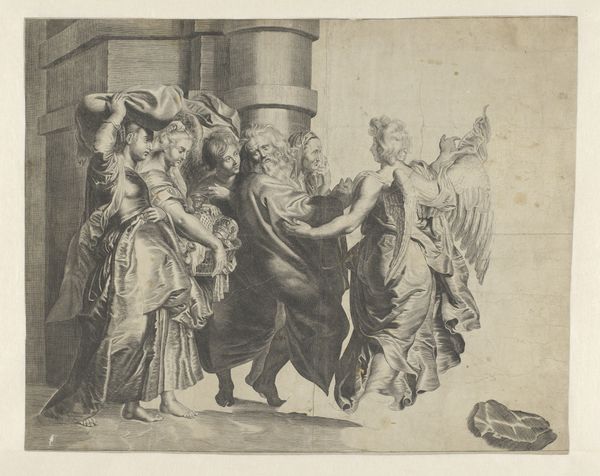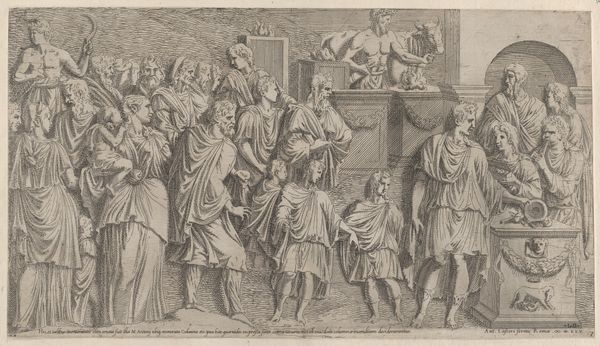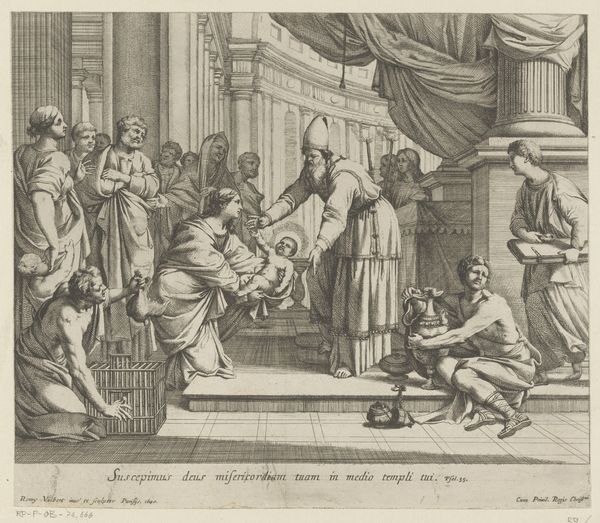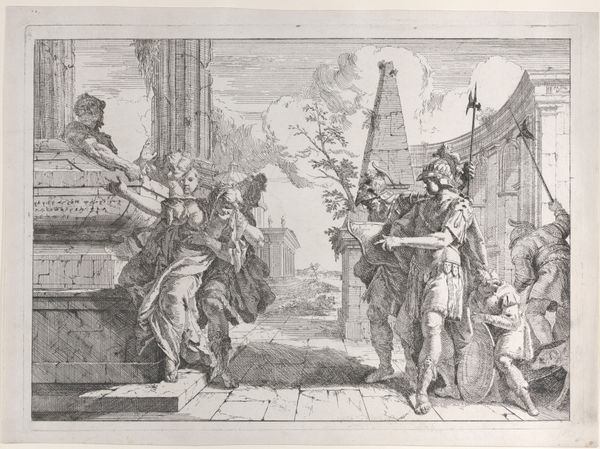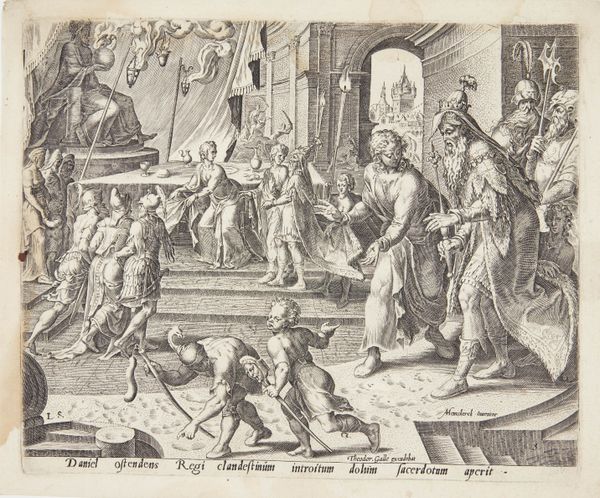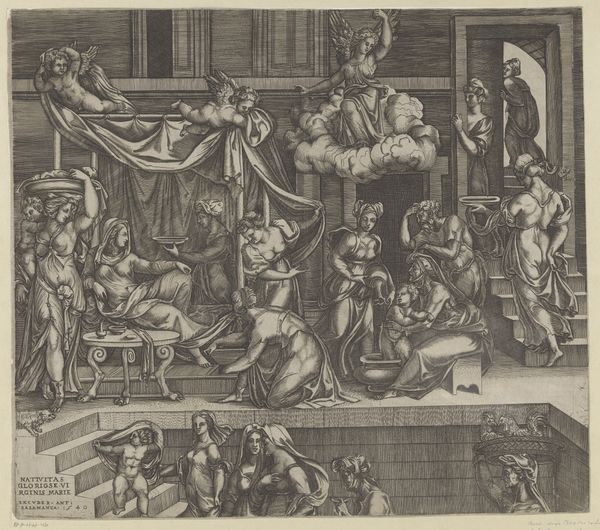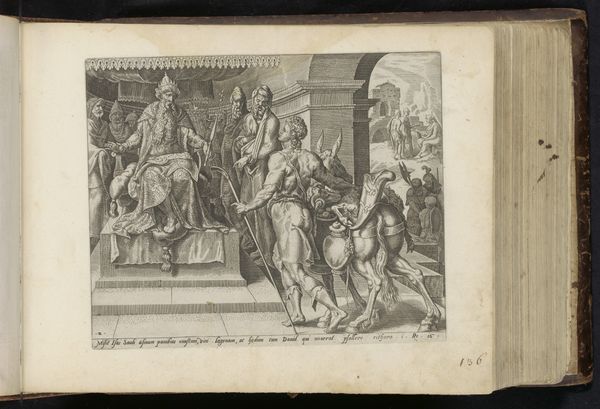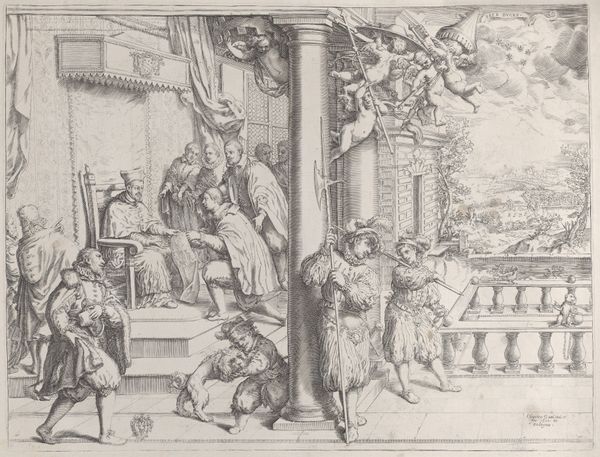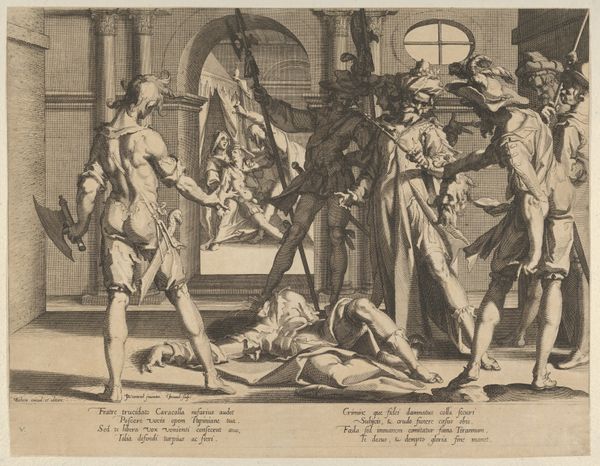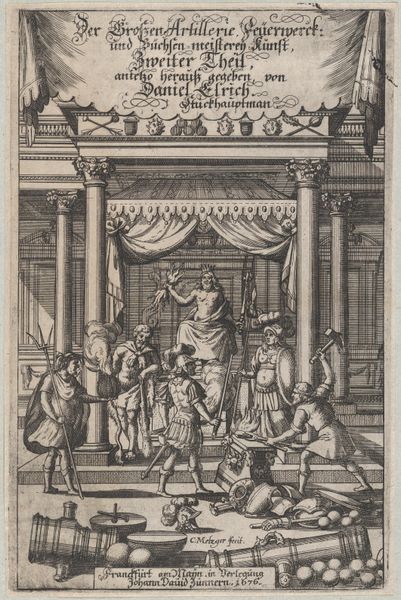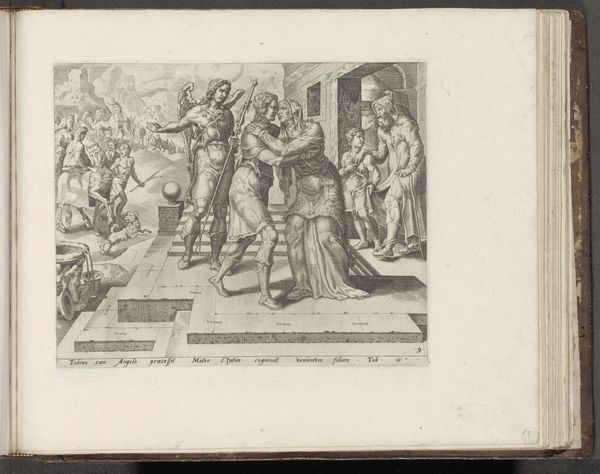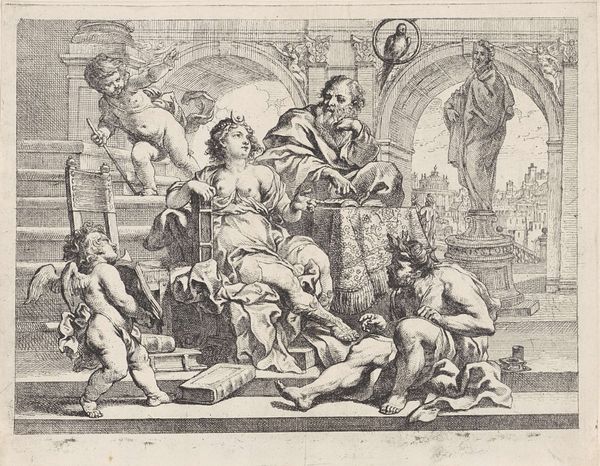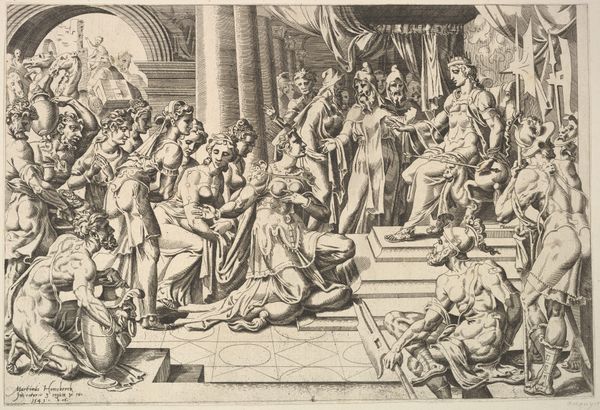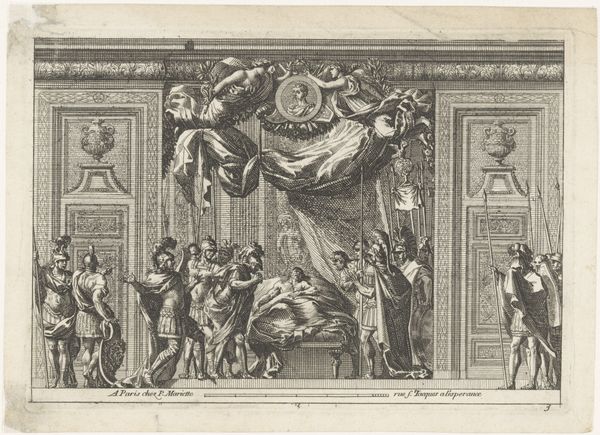
print, etching, engraving
#
allegory
#
narrative-art
#
baroque
# print
#
etching
#
figuration
#
classicism
#
history-painting
#
academic-art
#
italian-renaissance
#
engraving
Dimensions: height 290 mm, width 396 mm
Copyright: Rijks Museum: Open Domain
Curator: Immediately, the sheer density of figures strikes me. It's almost claustrophobic. Editor: We're looking at "Overwinning creëert het wapenschild van Scipione Borghese", Victory Creates the Coat of Arms of Scipione Borghese, an engraving and etching made by Francesco Villamena sometime between 1576 and 1624. It’s a fantastic example of the Italian Renaissance embracing both classicism and emerging baroque sensibilities. Curator: I'm intrigued by the figure of Victory, the winged woman central to the composition. The shield she presents displays complex symbolism, drawing you into layers of meaning connected to power and triumph. Editor: What I find compelling is the technical mastery over the printmaking process. Villamena uses etching and engraving to create textures and shadows that evoke sculptural qualities. Consider the sheer labor investment required to produce these details, indicative of workshop collaborations and market demand for refined images during this time. The lines create a range of tones; the materials involved - metal plate, acid, paper – are fundamental in creating a tangible symbol of cultural aspirations. Curator: Indeed, those cultural aspirations are evident through the imagery. You’ve got classical architecture, defeated figures evocative of ancient Rome, and of course, the eagle – a powerful symbol of imperial authority – prominently displayed above what appears to be a portrait of Borghese's family crest. It suggests a carefully constructed visual narrative linking Borghese to that illustrious past. Editor: Notice too, how those vanquished figures, positioned in the lower left corner, highlight a fascination with labor exploitation of marginalized people within representations of triumph. The emphasis is less on their individual stories, and more on the broader statement of power and wealth acquisition. Curator: That darker edge of power certainly runs through the image. Yet, the figure of Victory presents a perhaps contradictory reading – she isn't merely gloating. There’s almost a sense of… offering… the shield, almost like she is legitimizing power. Editor: It's all deliberately staged, from the tools and techniques of the etcher to the symbols utilized for political elevation and legitimization. To comprehend that early modern market which both required and devoured these prints exposes underlying ideological frameworks supporting the artistic enterprise. Curator: The work presents an incredible look at not only art historical production but also societal power. It truly illuminates the concept of power as an allegorical tale represented in beautiful form. Editor: Exactly. Examining its production highlights how such a tangible object participated in the construction of values prevalent then as well as now.
Comments
No comments
Be the first to comment and join the conversation on the ultimate creative platform.
